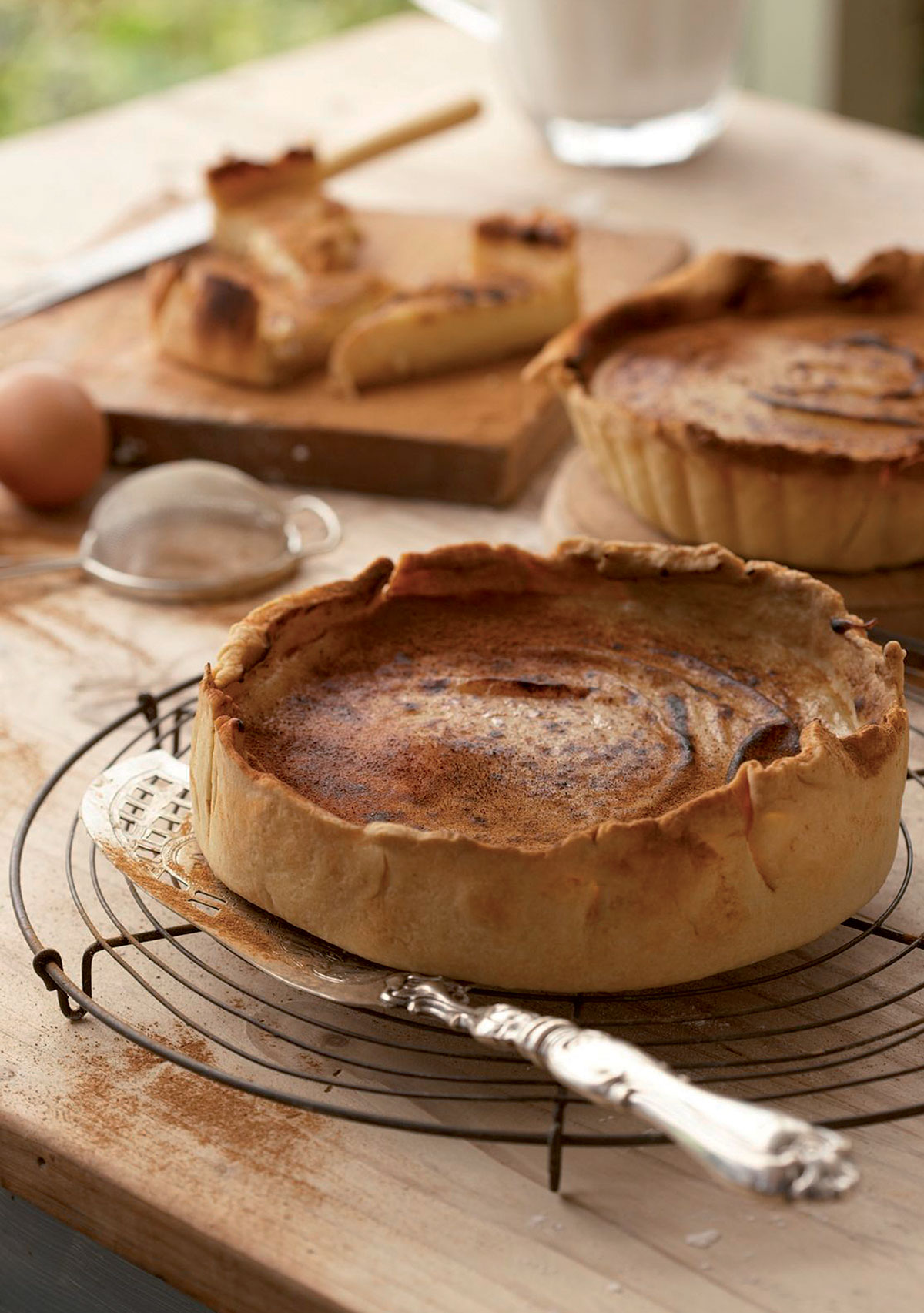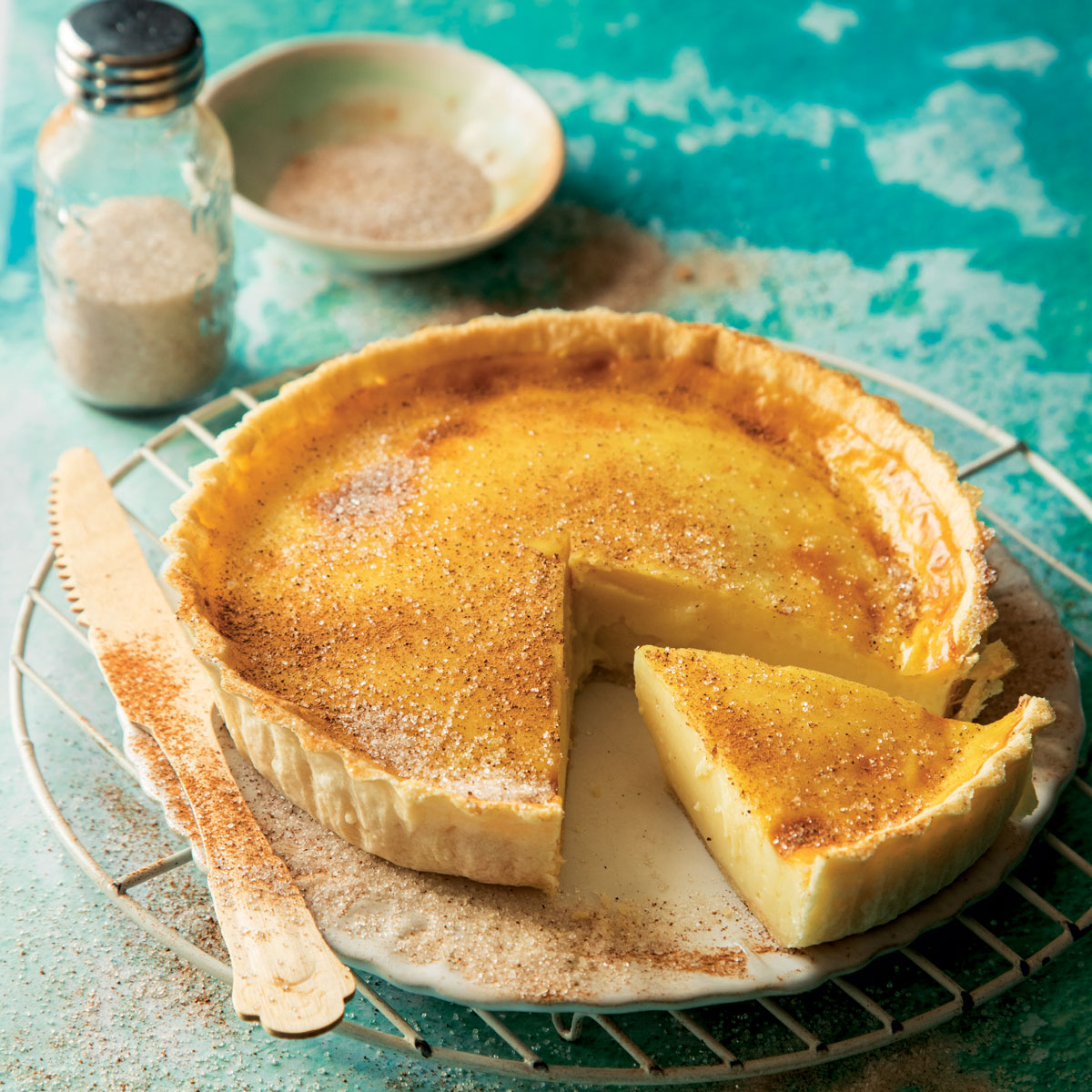4 milk tart tips from the pros
Fighting for first place with malva pudding as king of South African desserts, is the ever so comforting and creamy milk tart. There’s an unfussiness and delicious practicality to milk tart, and like anything good, it’s always better when it’s home-made, although there are some really good supermarket versions to be enjoyed (no prizes for guessing which one gets our vote!).
Milk tart can be polarising, with its die-hard fans enjoying the warm spiciness and creamy texture, and its haters completely put off by its sometimes-eggy flavour. Milk tart has its origins in the Cape as far back as the 17th century, when the Dutch introduced the custardy dessert topped with cinnamon. Cape Malay influence added cardamom, naartjie peel and apricot kernels, which brought it to iconic status.
The result is a rich, creamy custard filling with a dusting of earthy, spicy, sweet cinnamon. Today you’ll find many versions of this chilled dessert in the form of doughnuts, cakes, trifles and even a must-try malva-milk tart hybrid like this one by TASTETube host Keletso Motau.
Find the recipe for milk tart malva pudding here.
We asked pros in the food industry to give us their top tips for making milk tart. Here are there top tips:
1. Consider your pastry
The first thing to consider is your pastry: whether going with puff or shortcrust – a general rule of thumb for pastry is not to handle it too much; work fast and keep your hands cool. Confectioner and owner of Mondvol Soet Elmarié Rosochacki says: “If you’re using shortcrust, pre-shape your tart shell and freeze it so you can bake when needed. Shortcrust blind bakes really well from the freezer. The base and sides should be the same thickness so it bakes evenly – about 2 mm. You want to achieve that really nice ‘short’ texture.” Elmarié recommends baking blind with beans for about 20 minutes and then another 5 with no beans just until the middle has slight colour.
CHECK OUT: Our milk tart recipe guide.
“I remember my mother telling me about her memories of her grandmother who lived in Tulbagh and would get up at 4:30 am to roll out the puff for milk tarts. She would do so on a marble table outside the house to keep the dough cool.”
Chef Clement Pedro prefers to bake his milk tart on a puff pastry base. “I prefer baked milk tart over fridge-set, purely for texture. With the baked one, it’s always best to refrigerate it overnight and wait until the next day to serve.”

Find the recipe for milk tart brûlée here.
2. Always cook your custard before adding to your tart shell
Rebecca Timkoe of Ginger Pops confectionery in Gqeberha offers the following advice: “The best milk tart is the one where the custard is cooked before adding to the pastry, otherwise I find it tends to be more eggy in flavour. The important things I think, are full-cream milk, good-quality vanilla paste or extract, a buttery crust and good-quality cinnamon.” She is not opposed to a bit of cardamom in the custard, or a small amount sprinkled on top.
3. Infuse your filling and leave it overnight
Abigail Donnelly has several versions of this delicious treat on the TASTE website and recommends adding some naartjie zest to the custard for a fragrant, sweet touch.
South African-born Calvin von Niebel, former head chef at Ottolenghi, developed a delicious milk tart recipe for the eponymous deli. He has his own take on what he feels makes a winning tart – his special recipe requires the milk to be heated with spices and refrigerated overnight – he says the tart benefits greatly from the infusion. Instead of pastry, his base is an equally classic crust of Tennis biscuits, which he replaces in his recipe with digestive biscuits and desiccated coconut.

Find the recipe for Ayrshire milk tart here.
“I got some comments from purists saying it’s too much deviation from the OG – but when you look at very old milk tart recipes you can find examples where they infused the milk with things like naartjie peel or peach pips or bitter almonds, so I think there's room to play with infusions, although they should always be mild, soothing and gentle tasting.”
ALSO READ: How to make the perfect milk tart
Nokx Majozi, Durban-born chef and pie maker extraordinaire at London’s Holborn Dining Room, agrees with Calvin. “The milk in spice overnight is the best. The infusing of all the spices overnight elevates the flavour of the milk. Adding everything at the last minute does not impart quite as much flavour. I also prefer to use the biscuit pastry rather than the dough pastry, because the biscuit is light, crunchy and crispy, saves time, is easy to make and takes away the need to roll and blind bake. Using pastry takes up unnecessary time, to me.”
4. Get creative
Estelle Mitchell, confectioner and founder of Mitchell Food Group Treats (formerly Estelle’s Sweet Treats), is an avid fan of the dessert, and is partial to adding fresh fruit to her milk tarts. “Adding raspberries, blackberries or strawberries as a topping elevates the tarts visually and in tasting experience.”
“To ensure the base-to-filling ratio is perfect, or that the filling could be eaten as a standalone dessert, we have tested our baking techniques for decades and have perfected our buttery shortbread crust and our silky smooth filling. As an extra measure, I pass the custard through a strainer to ensure there are no lumps, it provides that extra silky smoothness, and instead of vanilla essence, I add almond essence. Add cornflour to your preferred thickness to ensure a good consistency.”

Find the recipe for Estelle’s milk tart here.
Legendary chef and author Errieda du Toit has some tips of her own to offer: “Use peach leaves, cinnamon sticks, naartjie peel, vanilla or cardamom as flavouring. Be frugal with the use of almond essence and soften it somewhat with vanilla.
A heritage trick is to boil three or four apricot kernels with the milk for a very natural almond flavour.
Although not traditional, a light sprinkling of ground ginger over the crust before pouring in the milk tart filling lifts the flavour.
Always roll dough in only one direction – away from you. Don't stretch the dough as it will just shrink back with a vengeance! For a milk tart with real swagger, and extra showy puff, place an extra strip of dough, about 4 cm wide, around the edge of the pie plate (directly on the plate, or over the top of the dough liner). Brush iced water between the dough layers to stick them together.
Do not put the plates lined with the pastry in the fridge before they’re filled, as this will make the crust at the bottom sticky.
Pour the boiling hot filling onto the rolled out pastry to keep the crust from becoming sticky – the dreaded soggy bottom!”





Comments